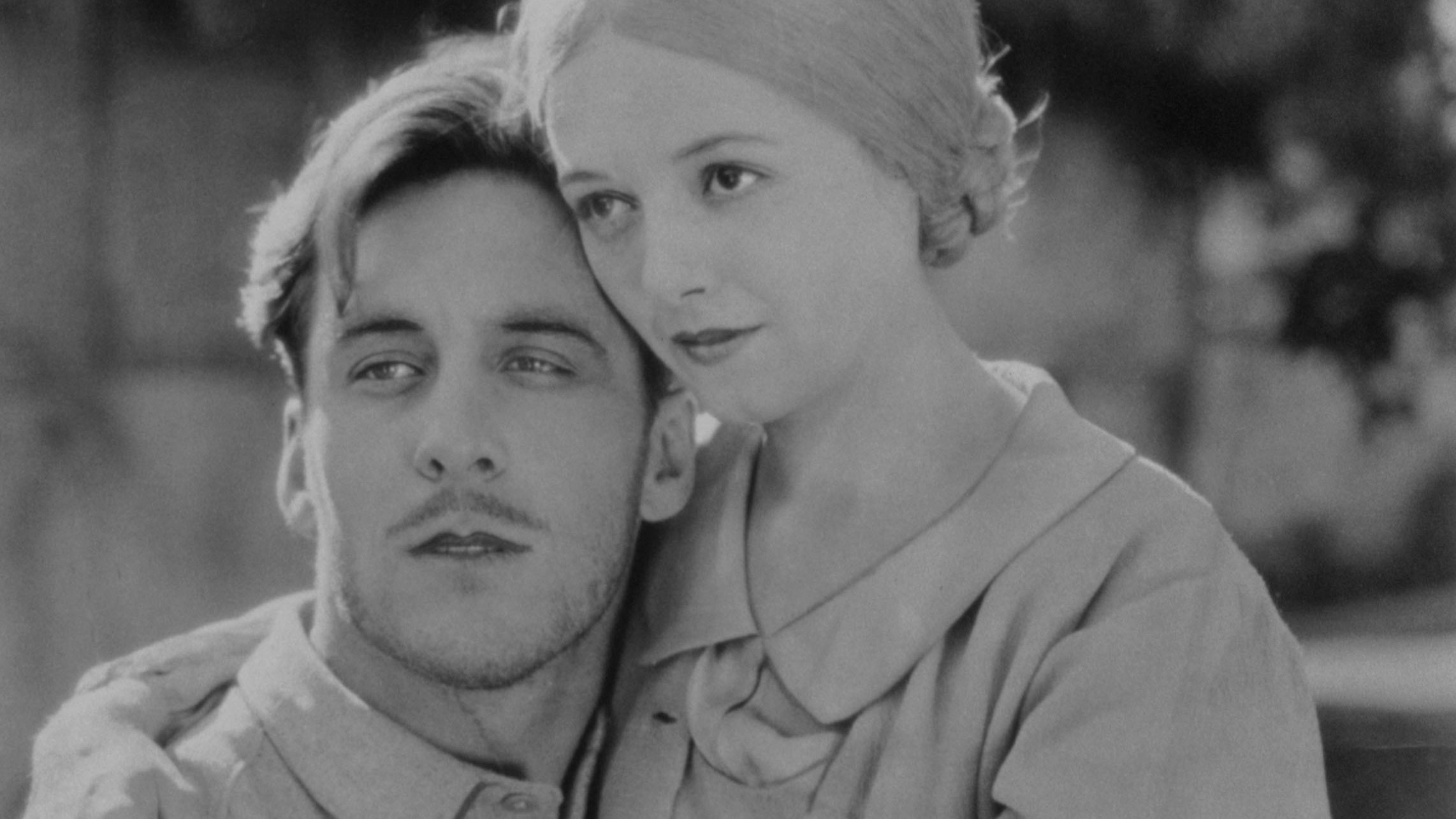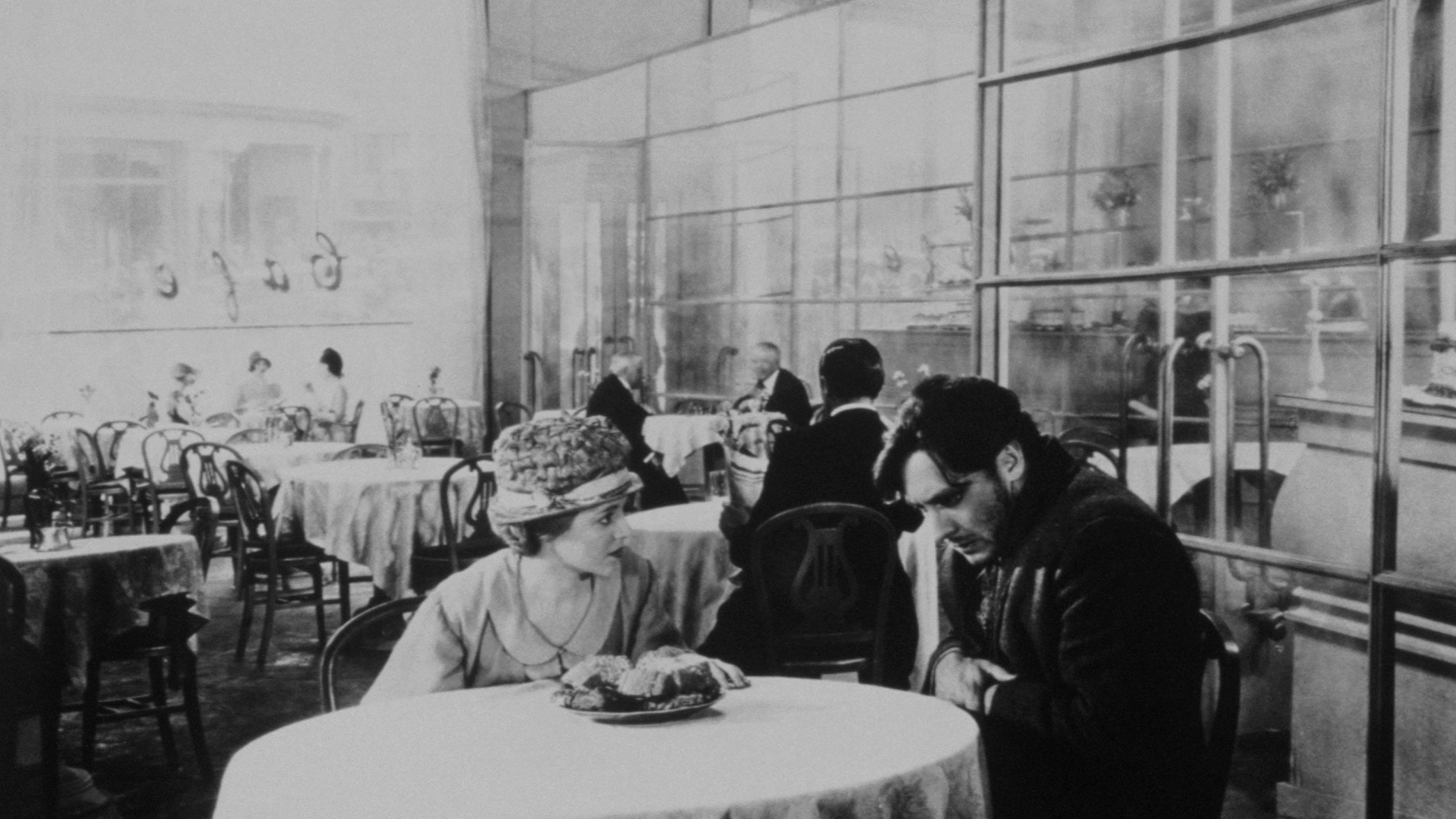SUNRISE: A SONG OF TWO HUMANS (1927)




12:30PM, Sunday April 30
Australian Premiere Introduced by Quentin Turnour
10:30, Monday May 01
Randwick Ritz
Director: F.W. Murnau
Country: United States
Year: 1927
Runtime: 94 minutes
Rating: G
Language: Silent, English intertitles
TICKETS ⟶
Australian Premiere Introduced by Quentin Turnour
10:30, Monday May 01
Randwick Ritz
Director: F.W. Murnau
Country: United States
Year: 1927
Runtime: 94 minutes
Rating: G
Language: Silent, English intertitles
TICKETS ⟶
AUSTRALIAN PREMIERE OF THE 4K RESTORATION
"In his first American film, the German director Friedrich Wilhelm Murnau creates some of the greatest images in the history of cinema." — The New Yorker
Voted the eleventh greatest film of all time in the 2022 Sight and Sound poll (between The Godfather and Singin’ In The Rain), F.W. Murnau’s visually striking tragedy tells the simple tale of a man who leaves his wife and child in the country for a femme fatale and the Big City. It is regarded as the last masterpiece of the silent era, the first psychological thriller in cinema history and in the words of The Sydney Morning Herald (28 July 1928) “among the most remarkable films that have ever been flashed on the screen”. 4K restoration.
“Blazing an inspirational trail for just about everything Hollywood has done since.” — The Guardian
“This is pure cinema, emotionally uplifting, utterly absorbing, sublimely refreshing.” — Radio Times
“F.W Murnau’s career-peak, the crowning film from that sacred edge-of-the-abyss year of 1927.” — Village Voice
The 12:30pm screening on Sunday 30 April will be introduced by Quentin Turnour, film historian, silent film specialist programmer and a member of the Cinema Reborn organising committee.
"In his first American film, the German director Friedrich Wilhelm Murnau creates some of the greatest images in the history of cinema." — The New Yorker
Voted the eleventh greatest film of all time in the 2022 Sight and Sound poll (between The Godfather and Singin’ In The Rain), F.W. Murnau’s visually striking tragedy tells the simple tale of a man who leaves his wife and child in the country for a femme fatale and the Big City. It is regarded as the last masterpiece of the silent era, the first psychological thriller in cinema history and in the words of The Sydney Morning Herald (28 July 1928) “among the most remarkable films that have ever been flashed on the screen”. 4K restoration.
“Blazing an inspirational trail for just about everything Hollywood has done since.” — The Guardian
“This is pure cinema, emotionally uplifting, utterly absorbing, sublimely refreshing.” — Radio Times
“F.W Murnau’s career-peak, the crowning film from that sacred edge-of-the-abyss year of 1927.” — Village Voice
The 12:30pm screening on Sunday 30 April will be introduced by Quentin Turnour, film historian, silent film specialist programmer and a member of the Cinema Reborn organising committee.
FILM NOTES
By Jacob Agius.
Reprinted by kind permission of Jacob Agius and the Melbourne Cinémathèque. The notes first appeared in CTEQ Annotations published by Senses of Cinema, Melbourne, October 2022.
Friedrich Wilhelm Murnau
After distinguished service in the 1914-18 War F W Murnau returned to Germany and established a film company with the actor Conrad Veidt. Between 1919 and 1926 Murnau made 18 feature films including the classics The Haunted Castle / Castle Vogeloed (1921), Nosferatu, a Symphony of Horror (1922) and Der Letze Mann/ The Last Laugh (1924).
After two more films, Tartuffe and Faust (both 1926), he accepted an invitation from William Fox, the head of the Fox Company to come to America. Murnau signed a four-year, four-picture deal with an annual salary beginning at $125,000 and rising in increments to $200,000.
The first picture Murnau made under this contract was Sunrise (1927) and Murnau used many of his own team from his German productions, notably scriptwriter Carl Mayer and designer Rochus Gliese. Photographer Charles Rosher had just spent a year working with Murnau in Germany.
Murnau made only two more films for Fox. The Four Devils (1928) is now regarded as lost and City Girl (1930) was a box office disappointment even though it is now regarded among his best work.
In 1931 Murnau joined forces with the documentarist Robert Flaherty to make Tabu: A Story of the South Seas. Richard Koszarski, one of the best chroniclers of the silent film era noted “The Murnau-dominated film that emerged, Tabu (1931), remains the last great achievement of the silent cinema.”
Murnau died in a car accident a week before Tabu opened.
Following its release Sunrise won three Oscars for Best Actress (Janet Gaynor), Cinematography, and a never-repeated award for “Unique and Artistic Picture”. Sunrise was recently voted #11 in the 2022 Sight & Sound poll of the greatest films ever made.
The Film
What can one say that hasn’t already
been said about F.W. Murnau’s lyrical masterpiece, Sunrise: A Song of
Two Humans (1927). The film marks the German auteur’s first American
film after being coaxed out of Germany to the burgeoning Hollywood by producer
William Fox, the founder of Fox Film Corporation. Much like Orson Welles
with Citizen Kane (1941) at RKO Studios, Murnau was given
carte blanche by Fox Studios to make Sunrise entirely in his
own vision. Murnau meticulously planned the film whilst still in Germany,
eventually arriving in America where he and his crew would create one of the
most elaborate sets the studio had seen at the time, building city streets, a
theme park and the idyllic nameless village. Despite these efforts, like Citizen
Kane, Sunrise was a commercial flop upon its initial
release. Yet only two years later, in 1929, the film was critically reassessed
and hailed at the inaugural Academy Awards, winning the ‘Most Unique and
Artistic Picture’ (the only year this award was presented), ‘Best
Cinematography’ and ‘Best Actress in a Leading Role’ for Janet Gaynor who plays
The Wife. Since then, the film has continued to stand the test of time,
praised as a cinematic masterpiece for its poetic portrayal of the human
struggle between faith and temptation.
Murnau penned the script for Sunrise with his writing collaborator Carl Mayer, who had worked with Murnau previously on Tartuffe (1925) and The Last Laugh (1926), along with Robert Weine on his hugely influential German expressionist horror film, The Cabinet of Dr. Caligari (1920). Due to the success and unique aesthetics of The Cabinet of Dr. Caligari, Fox was eager for Murnau to make a film styled in the German expressionist aesthetic, which the director and fellow Deutschlanders Fritz Lang and Robert Weine established in Germany throughout the 1910s and 1920s. In their films they employed abstracted, angular set designs and cinematography paired with harsh chiaroscuro lighting to invite the audience into their characters’ troubled inner-worlds. Although adopting a similar visual style, Sunrise would mark a stylistic leap forward for Murnau who transformed his harsh and angular German expressionism by contrasting it with a softer, romantic, naturalist aesthetic. The effects of this visual dichotomy effortlessly weaves us in and out of the characters’ inner and outer worlds, most evident in one of the most iconic scenes from the film where the camera tracks The Man walking through a dark, foggy swamp in the middle of the night to meet his mistress, only for the camera to suddenly pan away from him and move into his inner world by morphing into his point of view as he embraces his mistress under the cover of moonlight.
Although this singular visual style and lack of recorded dialogue has led Sunrise to be praised as a landmark of silent cinema, it’s actually one of the very first films to feature a synchronised soundtrack using an optical sound-on-film system known as ‘Movietone’ to fuse the score and sound effects to the film. It was also released in the same year as The Jazz Singer (Alan Crosland, 1927) which is regarded today for pioneering synchronised dialogue in cinema, positioning Sunrise in a transitory moment in cinema history, bridging the gap between the silent cinema before it and the sound films that quickly followed by combining synchronised sound with the aesthetics of silent cinema. This amounted to a level of immersion and emotional depth to the film that wasn’t common or technically possible in the silent films that preceded it.
Furthermore, the film is also rarely broken by intertitles as Murnau was known to detest them, famously using only one in his film The Last Laugh. Hence, intertitles are used sparingly throughout the films’ first half and gradually become non-existent by its second half. This lack of intertitles paired with the textured sound effects enhances the sensorial immersion into the film.
Another element of the film that is often overlooked is its use of comedy in its second half. The slapstick nature of the comedy marks the film as a forebearer to the screwball comedies that would rise to prominence twenty years later in the 1940’s which would frequently feature dysfunctional married couples breaking up, only to be brought back together in a series of humorous happenings. Murnau however was not known for comedy, which led to the belief that it was the studio who added these sequences into Sunrise. However, it was later proven that this was unfounded, as Murnau was given full creative control over the film.1 Although, from a modern perspective these comedic sequences can seem awkward and drawn out at times – most notably the pig chase and couple’s dance sequence which frequently cuts to a prudish man in the crowd around them, obsessively tidying a woman’s dress straps – it marked a new style for the director whilst also acting as a breath of fresh air after the claustrophobic dread that permeates the first half of the film.
Considering Murnau’s blending of genres, synchronised sound and silent cinema, as well as German expressionism with romantic naturalism in Sunrise, it’s a shame to know that he would only complete two more films before tragically passing in 1931 in an automobile accident at the age of 42. At the rate of his artistic success, who truly knows what heights Murnau could have reached and the films we would have been blessed with. However, lamentations aside, Sunrise still stands today as the German auteur’s masterpiece and as one of the most artistically unique films ever made in Hollywood, transcending its German expressionist roots into a timeless parable about our grapples with faith and our compassionate resilience in the face of temptation.
Murnau penned the script for Sunrise with his writing collaborator Carl Mayer, who had worked with Murnau previously on Tartuffe (1925) and The Last Laugh (1926), along with Robert Weine on his hugely influential German expressionist horror film, The Cabinet of Dr. Caligari (1920). Due to the success and unique aesthetics of The Cabinet of Dr. Caligari, Fox was eager for Murnau to make a film styled in the German expressionist aesthetic, which the director and fellow Deutschlanders Fritz Lang and Robert Weine established in Germany throughout the 1910s and 1920s. In their films they employed abstracted, angular set designs and cinematography paired with harsh chiaroscuro lighting to invite the audience into their characters’ troubled inner-worlds. Although adopting a similar visual style, Sunrise would mark a stylistic leap forward for Murnau who transformed his harsh and angular German expressionism by contrasting it with a softer, romantic, naturalist aesthetic. The effects of this visual dichotomy effortlessly weaves us in and out of the characters’ inner and outer worlds, most evident in one of the most iconic scenes from the film where the camera tracks The Man walking through a dark, foggy swamp in the middle of the night to meet his mistress, only for the camera to suddenly pan away from him and move into his inner world by morphing into his point of view as he embraces his mistress under the cover of moonlight.
Although this singular visual style and lack of recorded dialogue has led Sunrise to be praised as a landmark of silent cinema, it’s actually one of the very first films to feature a synchronised soundtrack using an optical sound-on-film system known as ‘Movietone’ to fuse the score and sound effects to the film. It was also released in the same year as The Jazz Singer (Alan Crosland, 1927) which is regarded today for pioneering synchronised dialogue in cinema, positioning Sunrise in a transitory moment in cinema history, bridging the gap between the silent cinema before it and the sound films that quickly followed by combining synchronised sound with the aesthetics of silent cinema. This amounted to a level of immersion and emotional depth to the film that wasn’t common or technically possible in the silent films that preceded it.
Furthermore, the film is also rarely broken by intertitles as Murnau was known to detest them, famously using only one in his film The Last Laugh. Hence, intertitles are used sparingly throughout the films’ first half and gradually become non-existent by its second half. This lack of intertitles paired with the textured sound effects enhances the sensorial immersion into the film.
Another element of the film that is often overlooked is its use of comedy in its second half. The slapstick nature of the comedy marks the film as a forebearer to the screwball comedies that would rise to prominence twenty years later in the 1940’s which would frequently feature dysfunctional married couples breaking up, only to be brought back together in a series of humorous happenings. Murnau however was not known for comedy, which led to the belief that it was the studio who added these sequences into Sunrise. However, it was later proven that this was unfounded, as Murnau was given full creative control over the film.1 Although, from a modern perspective these comedic sequences can seem awkward and drawn out at times – most notably the pig chase and couple’s dance sequence which frequently cuts to a prudish man in the crowd around them, obsessively tidying a woman’s dress straps – it marked a new style for the director whilst also acting as a breath of fresh air after the claustrophobic dread that permeates the first half of the film.
Considering Murnau’s blending of genres, synchronised sound and silent cinema, as well as German expressionism with romantic naturalism in Sunrise, it’s a shame to know that he would only complete two more films before tragically passing in 1931 in an automobile accident at the age of 42. At the rate of his artistic success, who truly knows what heights Murnau could have reached and the films we would have been blessed with. However, lamentations aside, Sunrise still stands today as the German auteur’s masterpiece and as one of the most artistically unique films ever made in Hollywood, transcending its German expressionist roots into a timeless parable about our grapples with faith and our compassionate resilience in the face of temptation.
The Restoration
The
original negative of Sunrise was lost
in a fire at Fox’s storage facility in New Jersey in 1937. A print made in
1936, which included a recording of the original soundtrack, held by the UK National Film and Television
Archive has been used as the basis for the restoration work that has taken
place since 2002.
Credits
Director: F. W. MURNAU | USA | 94 mins @ 24 f.p.s. | 2K
Flat DCP (orig. 35mm, 1:1.19) | B&W | Orig. mono non-synchronised musical soundtrack
| English intertitles | (G).
Production Company: Fox Corporation | Producer: [William FOX, uncredited] | Script: Carl MEYER, Katherine HILLIKER & H. H. CALDWELL, from Hermann Sudermann’s short story Die Reise nach Tilsit | Photography: Carles ROSHER, Karl STRUSS | Editor: Harold D. SCHUSTER | Art Direction: Rochus GLIESE | Special Effects: Frank D. WILLIAMS | Music: [Hugo RIESENFELD, uncredited, based on themes by Charles Gounod and Frédéric Chopin].
Cast: George O’BRIEN (‘The Man’), Janet GAYNOR (‘The Wife’), Margaret LIVINGSTON (‘The Woman from the City’) Bodil ROSING (‘The Maid’), J. FARRELL MCDONALD (‘The Photographer’), Ralph SIPPERLY (‘The Barber’).
Production Company: Fox Corporation | Producer: [William FOX, uncredited] | Script: Carl MEYER, Katherine HILLIKER & H. H. CALDWELL, from Hermann Sudermann’s short story Die Reise nach Tilsit | Photography: Carles ROSHER, Karl STRUSS | Editor: Harold D. SCHUSTER | Art Direction: Rochus GLIESE | Special Effects: Frank D. WILLIAMS | Music: [Hugo RIESENFELD, uncredited, based on themes by Charles Gounod and Frédéric Chopin].
Cast: George O’BRIEN (‘The Man’), Janet GAYNOR (‘The Wife’), Margaret LIVINGSTON (‘The Woman from the City’) Bodil ROSING (‘The Maid’), J. FARRELL MCDONALD (‘The Photographer’), Ralph SIPPERLY (‘The Barber’).
